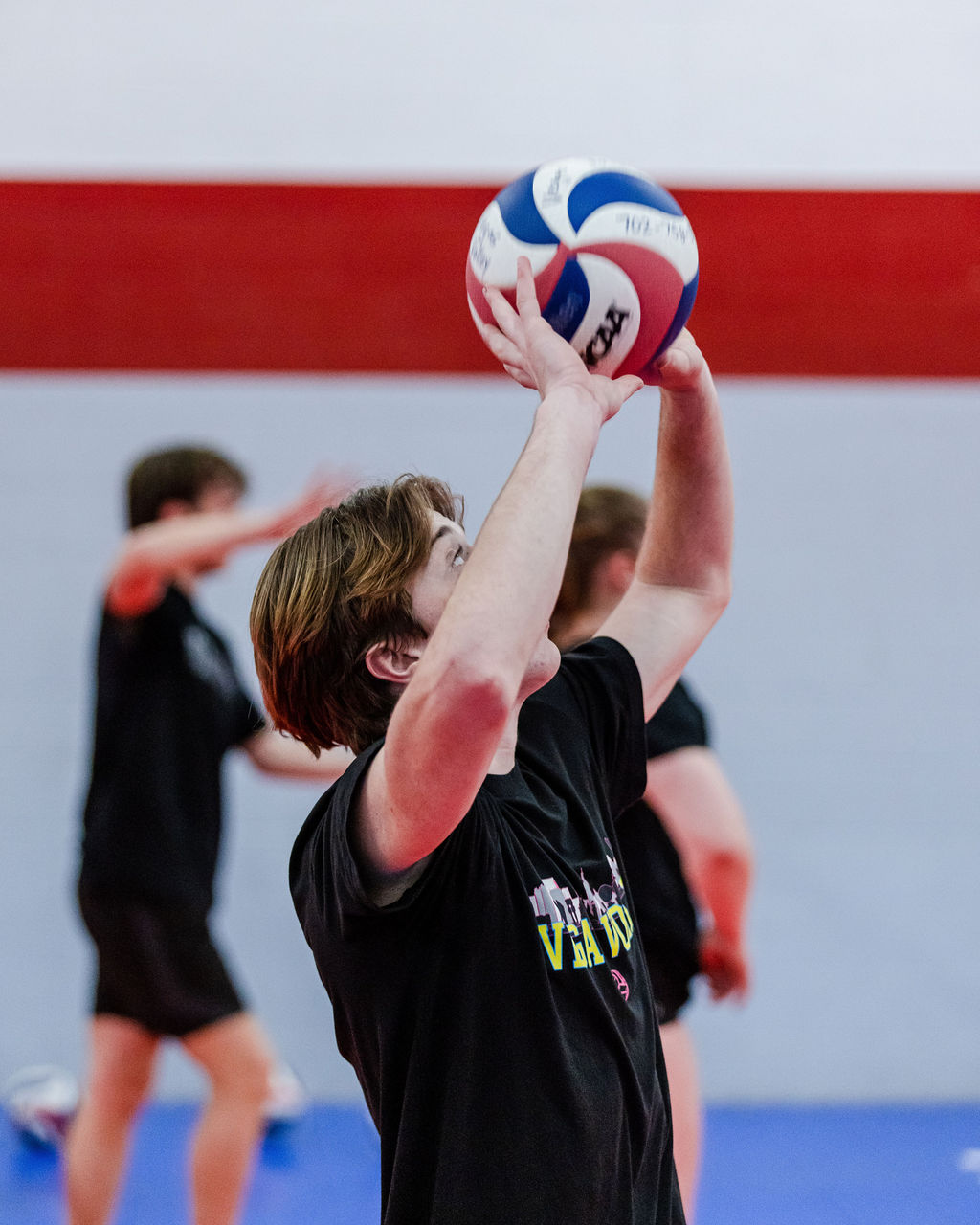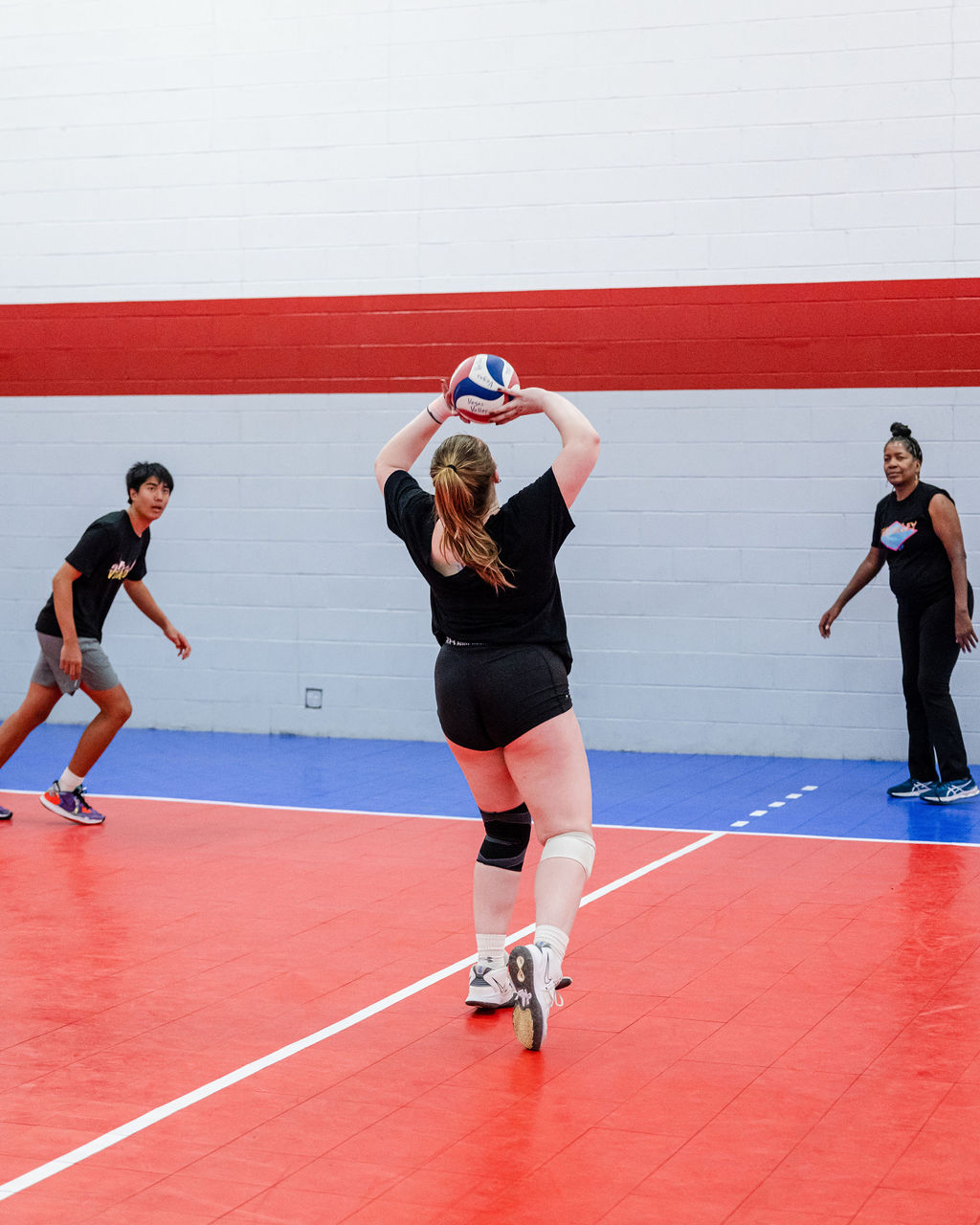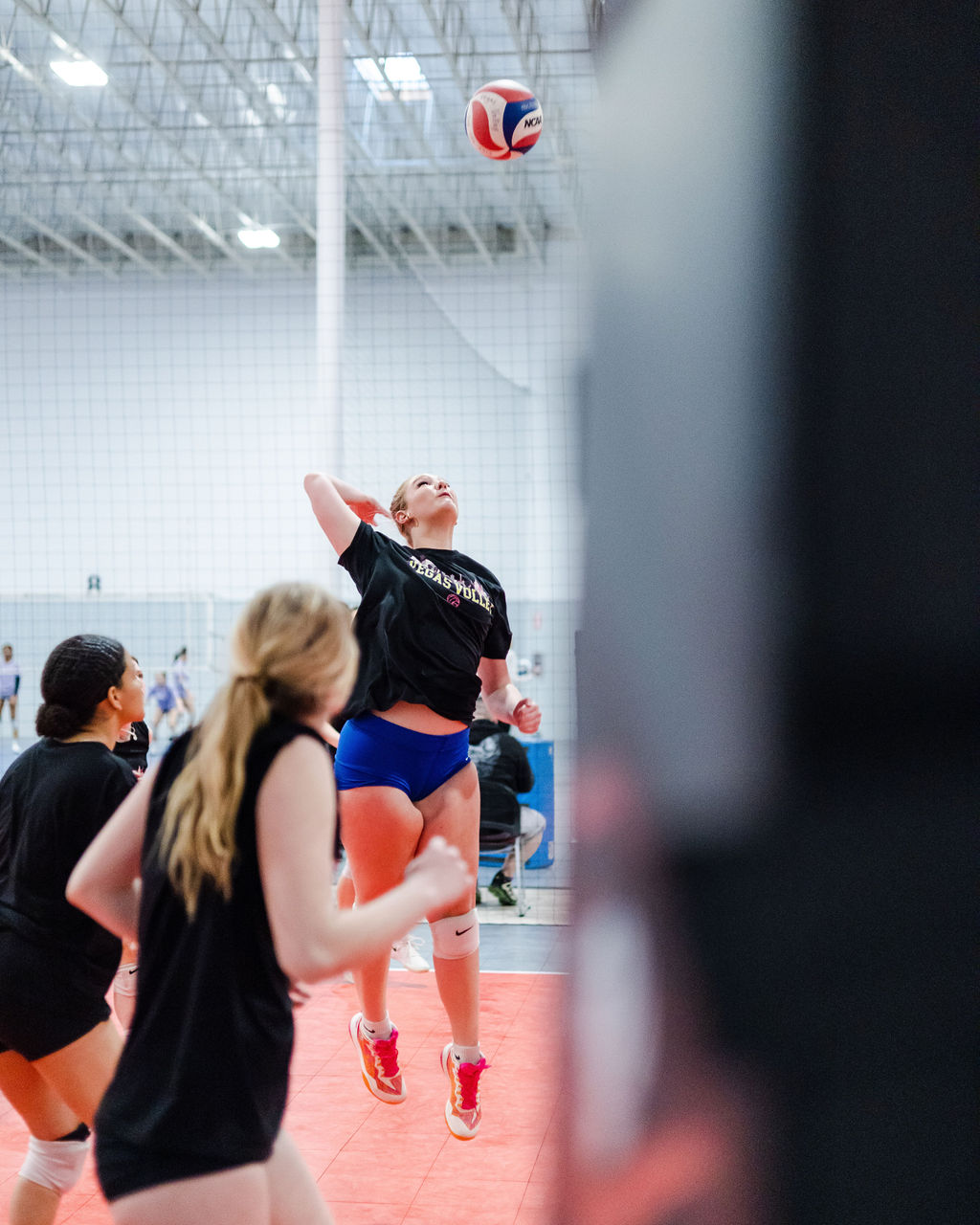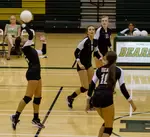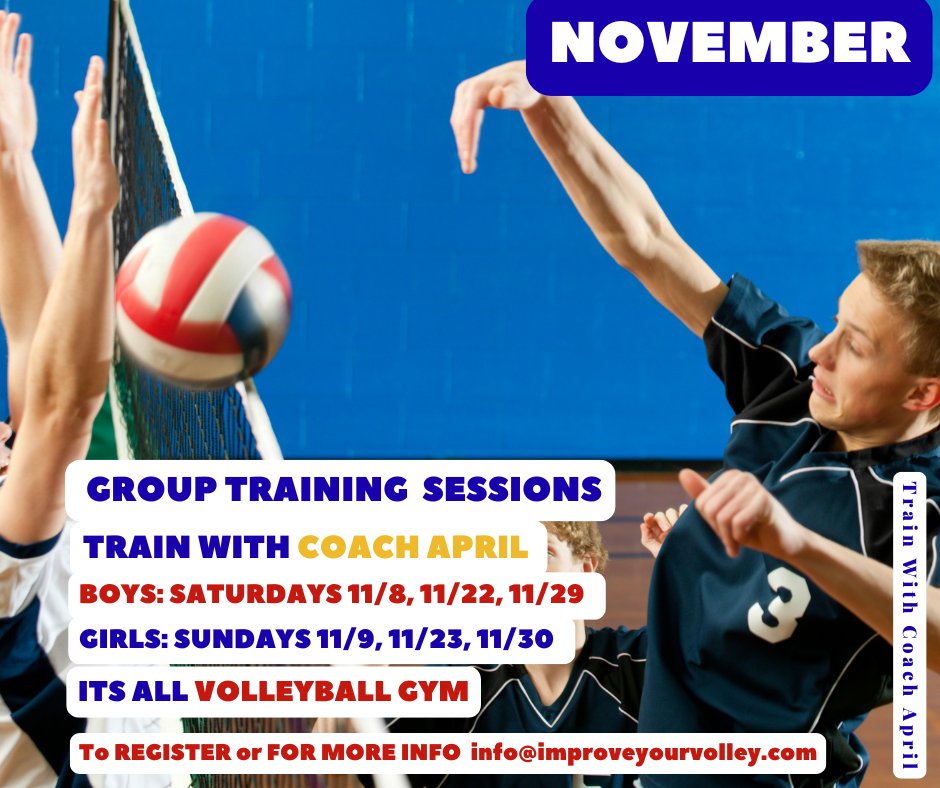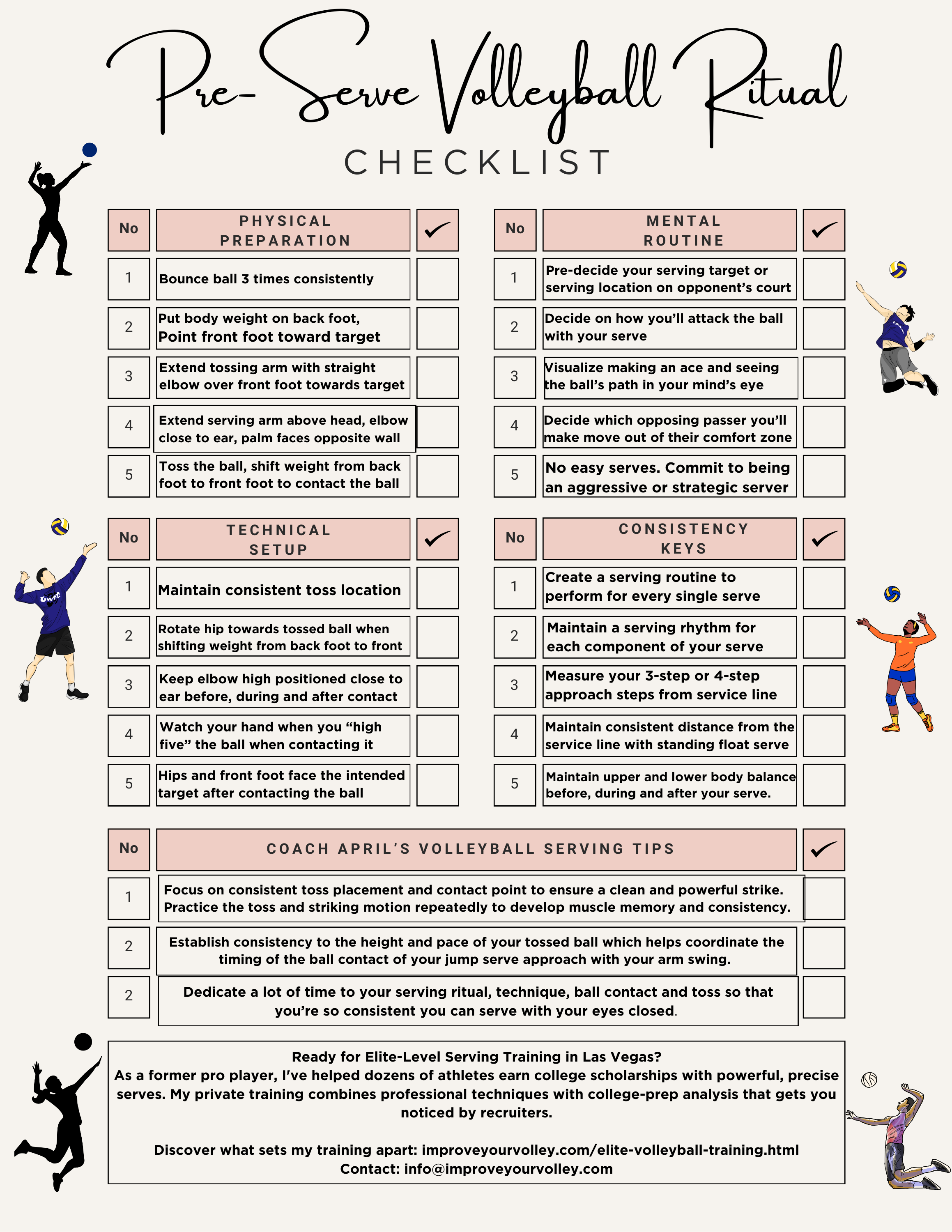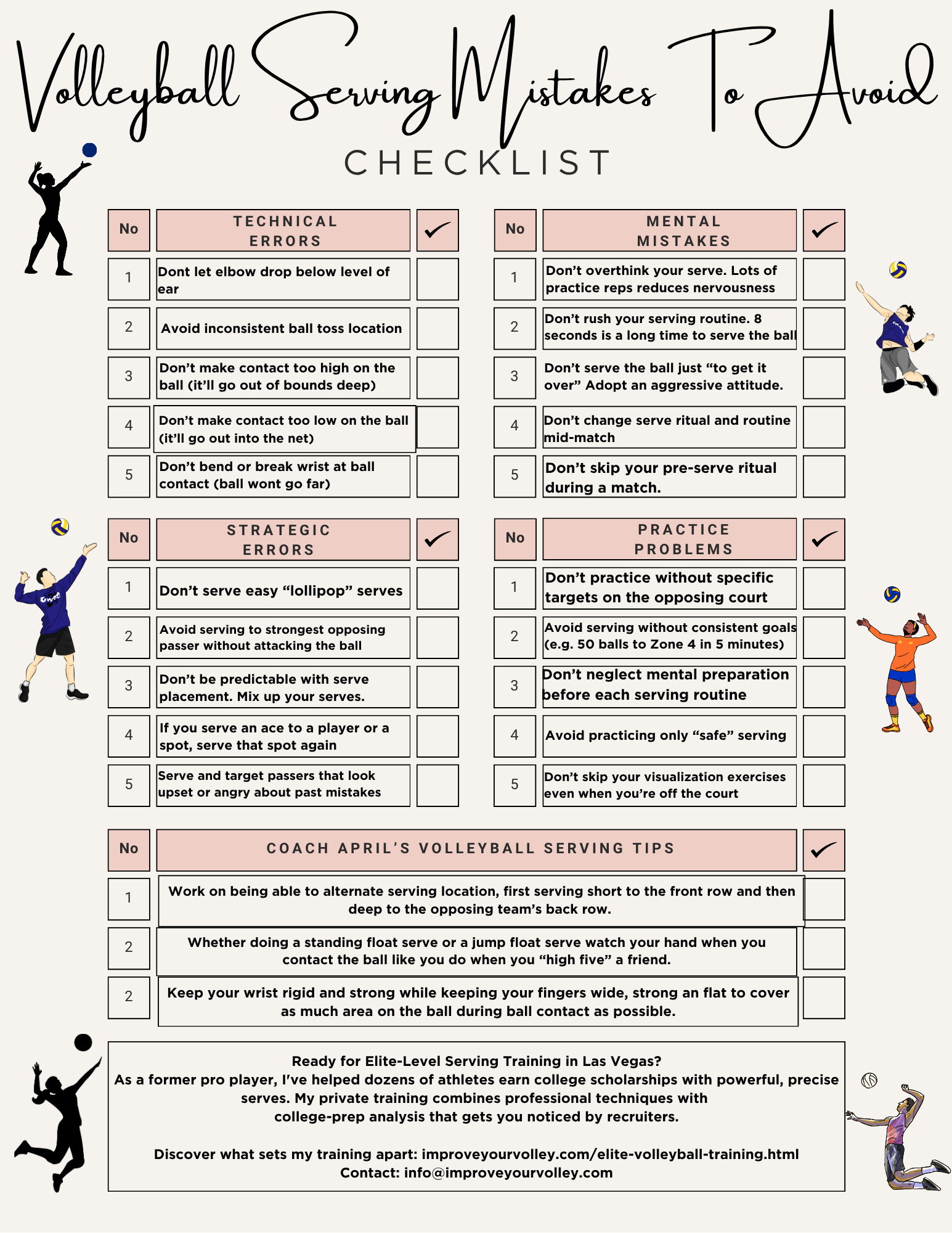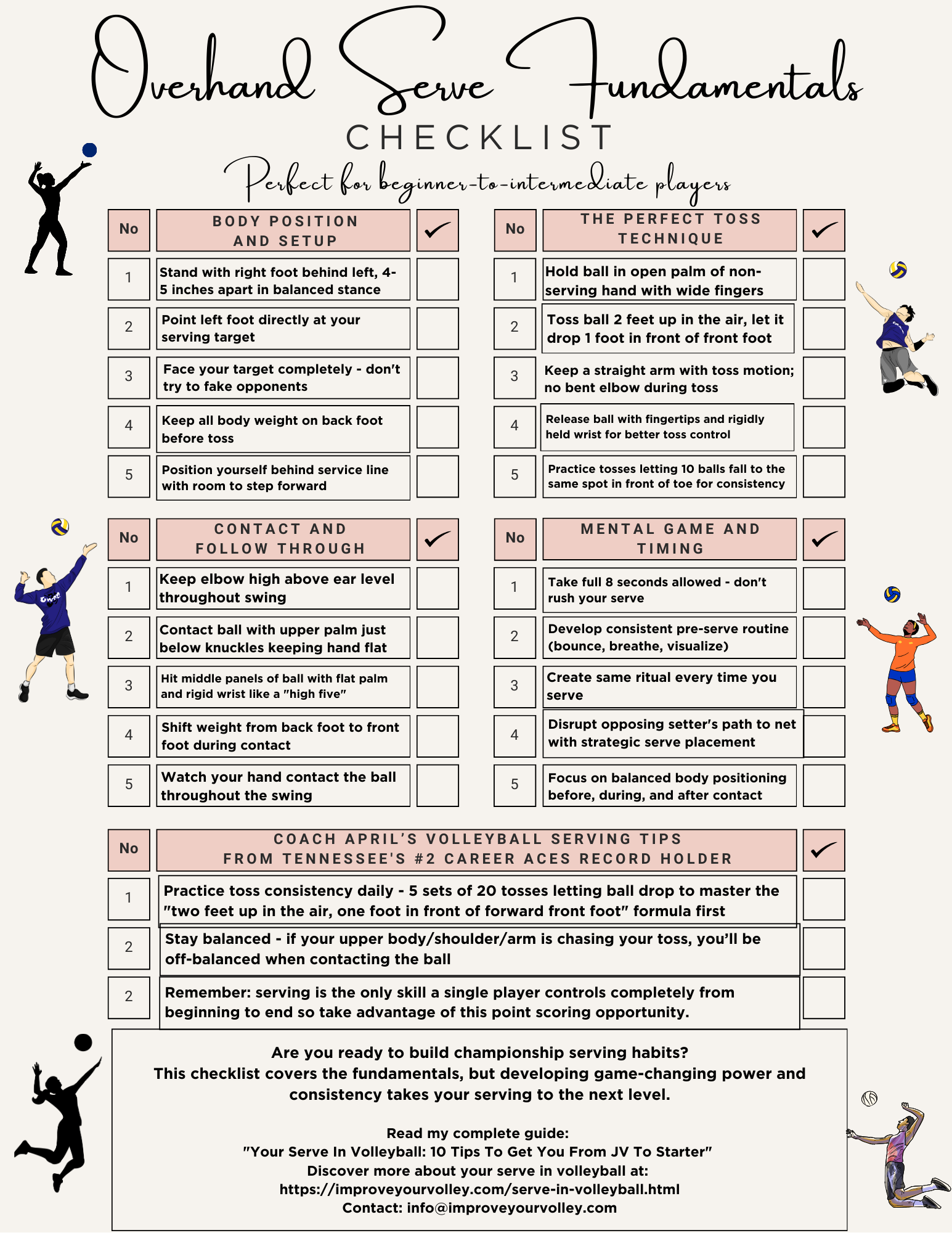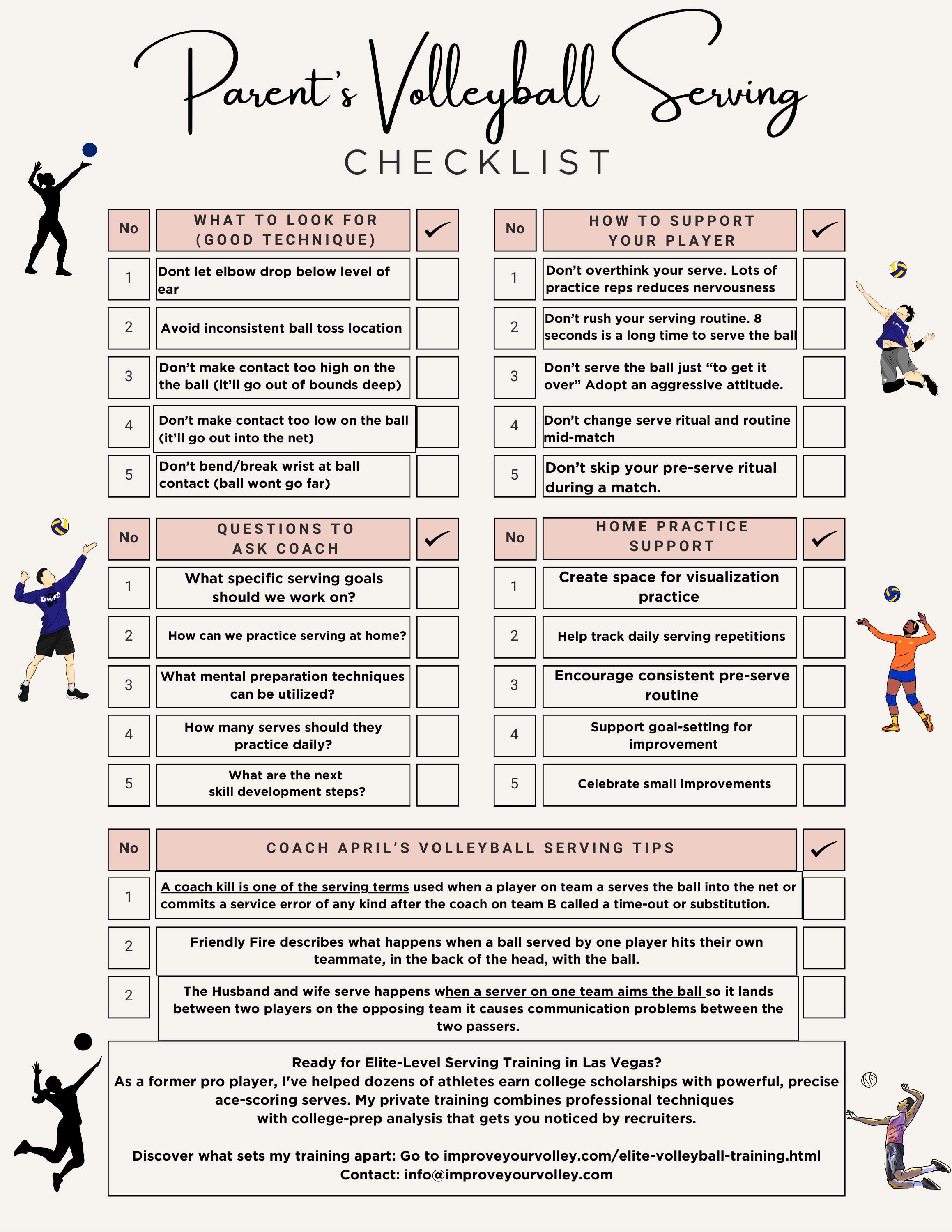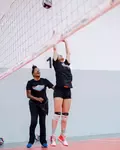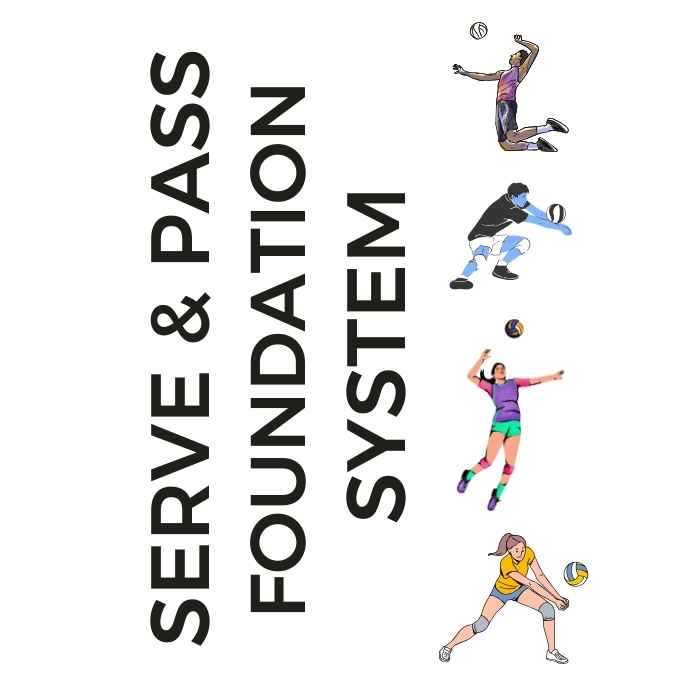
Serve + Pass Foundation System: The Complete Skills Arsenal The two-skill mastery system that transforms inconsistent players into the athletes coaches build their lineups around. Stop Struggling With The Two Most Important Skills In Volleyball!
- Improve Your Volleyball with Coach April
- Words Used in Volleyball
- Setting in Volleyball
Setting In Volleyball: My Guide To The Basic Slow Offense Setter Calls
I'll teach you the volleyball setting calls and offensive plays that beginners learn in practice while setting in volleyball including four, two and five sets.
Setting in volleyball requires more than just putting up a hittable ball - it's about understanding and using specific set calls that allow your offense to run smoothly.
I teach the setters that I train, what the common calls to know are and how to use them effectively so that they can run successful offensive plays that score points.
Over my three decades of coaching setters, I've taught the USA Volleyball system of volleyball set calls that progress from basic to advanced.
Whether you're delivering high outside sets, quick middle attacks, or back row plays, using the right terminology helps setters and hitters stay connected and creates scoring opportunities for your team.
I'll teach you the same setting terminology and offensive calls I use with my Vegas Volley setters.
We'll start with the fundamental set calls every player should know, then build toward more advanced offensive strategies that my most successful setters use to keep opposing blockers guessing.
Essential Volleyball Set Calls
Every Player Should Know
Before setters can run complex offensive plays, they need to understand and consistently execute the basic set calls.
These are the fundamental sets I teach all my beginning setters, and they remain the backbone of any volleyball offense - from high school to college level play.
Outside Sets: Your Go-To Play
Lets think about the outside set as volleyball's version of a basketball outlet pass. It's the most common set in volleyball and often the safest choice when:
- Your pass isn't perfect
- Your setter is out of position or late to the pass
- Your libero has to step in to set
- You need a high-percentage play
Outside set - the outside set is delivered by the setter to one of the two outside hitters, the left front or right front player.
The outside set is like the "outlet pass" in basketball, because it's the "go-to" a setter has when they're in trouble or when they are without any quick set options.
If the setter is in defense and digs the first ball then the libero has to step in her place to set, this player will nine times out of ten set to the outside to one of the outside hitters.
Setting In Volleyball:
The Four Set Your Left Side Attack
The four set is typically the first set any left-side hitter learns to attack.
Here's exactly what it looks like:
- A high ball set that at it highest height comes to a distinct "A-shaped" point which is10-15 feet at its highest before coming down
- Delivered 1-2 feet off the net
- Lands 1-2 feet inside the left antenna
- Gives the left side hitter time to make a full three or four step approach
A spiker hitting a four set should make a spike approach that keeps them behind the ball so that you can keep the ball that's been set to you, the opposing block forming in front of you and the digger in the court or the open space on the court to hit to.
If you approach too soon you will end up underneath the four set ball and this will force you to only be able to look up, where now you can't see the block, or the court and have no way of knowing where the best place to hit is.
This happens when outside hitters don't trust the fact that they are fast enough to hit the four set, so they start their approach early or creep in too soon and end up completely underneath the ball, which limits their vision of the opposing team's court.
That's why outside hitters spend a ton of time in practice or in private training to work on the best timing to use so that you can keep the ball in front of you while hitting.
Setting in Volleyball
The Five Set: Your Right Side Option
The five set is the right-side equivalent of the four set, but with some key differences:
- Slightly lower arc (8-10 feet)
- Shorter travel distance
- Requires precise timing between setter and hitter
- Usually delivered as a back set
A five set is a high ball back set with an arc that reaches anywhere from eight to ten feet delivered over the head of the setter to the right front hitter.
The five set for the right front hitter is what the four set is to the left side hitter.
It's a little lower because the setter is much closer to the right front player so the ball doesn't have as far to travel.
It's also for that reason that the right side player needs to watch their timing so they don't start their spike approach too soon because they have less time to adjust once they are up in the air.
Opposite hitters need time to make their approach so the five set ball stays in front of them, so that they
- can see the block,
- the open spaces on the court, and
- can rest assure that they have a "view to a kill'.
Setting In Volleyball
The Two Set: Your Middle Attack
The two set serves as your basic middle attack:
- the ball is higher than a quick set
- the ball reaches a top height of about 2-4 feet above the net
- the ball lands a 'handshake" distance between the front of setter and the middle blocker 1-2 feet off the net
- gives the middle blocker time to make a three-step approach and to hit around an opposing team's middle blocker
Setting In Volleyball:
Frequently Asked Questions
 A 4 set is a high ball to the left side that reaches 10-15 feet at its peak, while a 5 set is a back set to the right side that's slightly lower (8-10 feet) because it travels a shorter distance.
A 4 set is a high ball to the left side that reaches 10-15 feet at its peak, while a 5 set is a back set to the right side that's slightly lower (8-10 feet) because it travels a shorter distance.Q: What's the difference between a 4 set and a 5 set?
A: A 4 set is a high ball to the left side that reaches 10-15 feet at its peak, while a 5 set is a back set to the right side that's slightly lower (8-10 feet) because it travels a shorter distance.
Q: Why do setters jump set some balls but not others?
A: Setters jump set to speed up the offense, disguise their intentions, and create better angles for their hitters. However, not every ball needs to be jump set - especially when running a basic offense or working with less experienced hitters.
Q: How do I know which hitter to set to?
A: Look for these factors:
- which hitter is hot who's been scoring points and consistently putting balls on the floor,
- who has a single blocker in the middle of a rally,
- who's matched up against a shorter opposing blocker
- who's ready and calling for the ball the loudest, and
- what the score situation is.
I advise you to start with high-percentage plays like outside sets when you're learning.
Q: What makes a good set for hitting?
A: A good set has consistent height, is the right distance off the net (usually 1-2 feet), and gives your hitter enough time to make their approach. The ball should come down where your hitter can contact it at their highest reach point.
Q: How do I improve my setting accuracy?
A: Focus on proper hand position, getting your feet to the ball quickly, and squaring your body to your target. Practice basic sets until they become automatic before moving to more advanced techniques.
Q: Why do setters need to be vocal?
A: Setters should communicate with their hitters about the type of set coming, call out defensive coverage, and provide leadership during plays. Clear communication prevents confusion and helps run an effective offense.
Q: What's the most important skill for a new setter?
A: Consistent ball control is crucial. Before learning complex plays, focus on delivering accurate, hittable balls to your outside hitters using basic set calls like the 4 set.
Q: How far off the net should sets be?
A: Basic sets should be about 1-2 feet off the net. This gives hitters room to approach and swing while keeping the ball close enough to hit sharp angles.
Q: What should I do if I get a bad pass?
A: Focus on getting consistent footwork and speed to get to the ball quickly and setting a high outside ball (4 set) to give your hitter time to adjust. This is safer than trying to force a more complex play under a stressful situation.
Q: How do I know if my sets are too high or too low?
A: Watch your hitters' timing. If they're waiting at the net or having to rush their approach, adjust your set height. For basic sets like 4s and 5s, aim for that distinct "A-shaped" arc we discussed.
Master All Set Types (Not Just High Balls)
Now that you understand basic high ball sets, are you ready to add second tempo (hut, red) and first tempo (one, shoot) sets to your arsenal?
My Complete Setting System includes a dedicated checklist for every set type - with exact height specifications, arc patterns, and when to use each strategically.
Get the Complete Setting System.
The Setting In Volleyball Vocabulary
Where do you need to go now?
Here are three options:
- Learn more about the volleyball words, terms and terminology in the Related Links below.
- Follow the suggested reading on our Sitemap page Learning How To Play (Sitemap)
- Or visit the pages in the Information section in the drop down menu at the top of the page.
From Lady Vol to Legend: Coach April Produces Powerful Passionate Players...is that you?
What Are You Looking For?
Click to Download Your Pre Serving Ritual Mastery Checklist pdf:
🎯Volleyball Pre Serving Ritual Guide -
Players! Learn How To Transform Your Serve from Weak to Weapon
Click to Download Your Parent's Volleyball Serving Checklist pdf
🎯Parent's Volleyball Serving Checklist Guide
Parents! Help Your Player Develop Championship Serves (Even If You've Never Played)

Hi there!
Thanks for stopping by. Hope you learned something today that will help you reach your volleyball goals.
Be sure to subscribe to my email newsletter so you can learn more each week!
Stay strong! Stay motivated!
-Coach April

SUSCRIBE to my email newsletter below!
 Click to learn more about the weekly volleyball classes and clinics or email info@imrpoveyourvolley.com for information
Click to learn more about the weekly volleyball classes and clinics or email info@imrpoveyourvolley.com for informationCongratulations to my seven Boys-18s Vegas Volley club players who played in two state championship finals yesterday, the 3A and 5A State champinship finals at Sunrise Mountain High School.
TOURNAMENT CHAMPIONS!
A-1 Vegas Volley VBC
In It To Win It Tournament
May 2 - 4, 2025 Tournament
Gold Medalists
18s Premier Division
Vegas Volleyball's Unsung Heroes: Celebrating Moms with Peace Love Volleyball Shirts
Ready to energize your volleyball mom journey?
Subscribe to my 'Producing Powerful Passionate Peaceful Players' email list above on ImproveYourVolley.com.
You'll receive energy-boosting tips, exclusive insights from me, Coach April Chapple on maintaining momentum in volleyball.
Let's power up the Vegas volleyball scene together!
Recent Articles
-
6 Volleyball Setting Checklists For Players With College Prep Goals
Dec 24, 25 06:18 PM
6 volleyball setting checklists that build elite setters. Master hand positioning, footwork, set types, back setting & jump setting. Includes at-home drills. -
The Volleyball Checklist: Skill Development Systems That Get Results
Dec 24, 25 02:22 AM
Master serving, passing and other basic skills with a step-by-step volleyball checklist from a Tennessee Hall of Famer who trains college-recruited athletes. -
How To Set A Volleyball A Basic Setter Guide To Good Setting Technique
Dec 24, 25 02:07 AM
Want to be a good volleyball setter? I show you how to set a volleyball the way I teach my club players, focusing on hand and body placement and ball contact.
